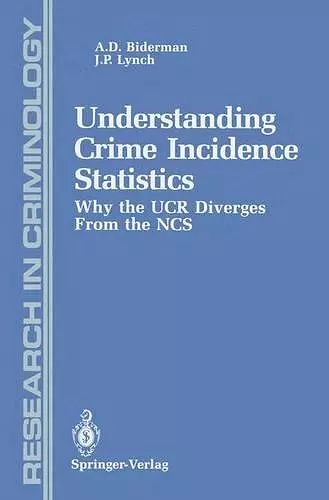Understanding Crime Incidence Statistics
Why the UCR Diverges From the NCS
James P Lynch author Albert D Biderman author
Format:Paperback
Publisher:Springer-Verlag New York Inc.
Published:26th Sep '11
Currently unavailable, and unfortunately no date known when it will be back

Springer Book Archives
The prominence achieved by the novel measure of "households touched by crime" when it was introduced into the National Crime Survey (NCS) in 1981 was responsible for renewed attention to comparisons between the crime rates reported by the NCS and the Uniform Crime Reports (UCR).The prominence achieved by the novel measure of "households touched by crime" when it was introduced into the National Crime Survey (NCS) in 1981 was responsible for renewed attention to comparisons between the crime rates reported by the NCS and the Uniform Crime Reports (UCR). The new NCS measure suggested that crime was declining; this at a time of widespread awareness that the UCR Index was at all-time highs. Com parisons of the NCS and UCR in The New York Times (1981) and the Washington Post (1981) had the unfortunate consequence of reviving old and usually ill-informed arguments about which is the "better" measure of "trends in crime. " More recent discrepant changes of the two measures in 1986 and 1987 rekindled the debate, although with somewhat diminished stridency. The efforts of criminological statisticians to develop an appreciation for the two statistical systems as quite different but complementary measures have suffered a setback in these debates, but an opportunity is also afforded to improve the understanding of crime statistics by officials, the media, and the public. The need remains for the Bureau of Justice Statistics (BJS) , the Federal Bureau of Investigation (FBI), and the research community to explain in quantitative terms the ways in which the two systems attend to different, albeit overlapping, aspects of the crime problem.
ISBN: 9781461277477
Dimensions: unknown
Weight: 240g
132 pages
Softcover reprint of the original 1st ed. 1991